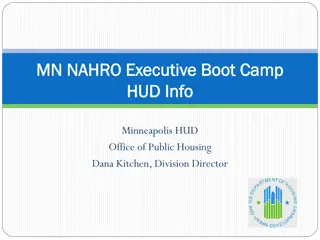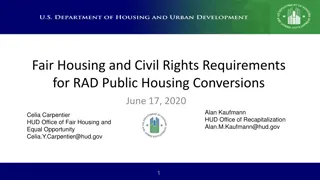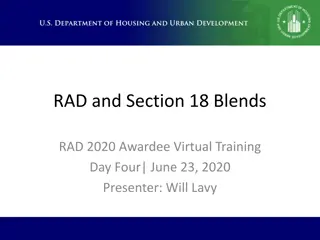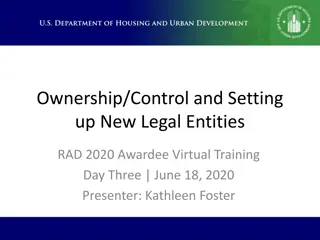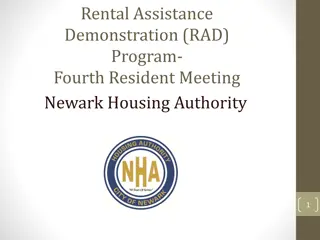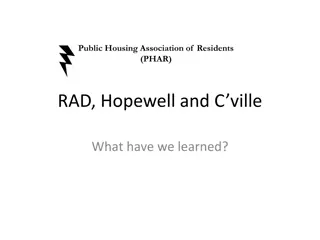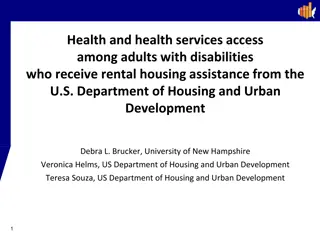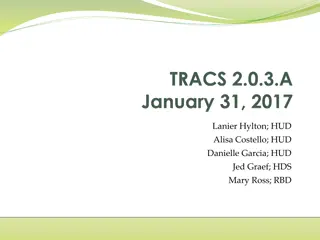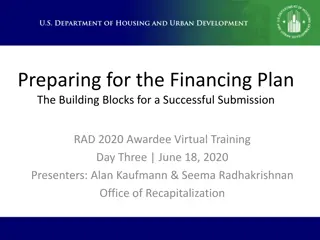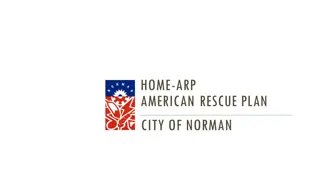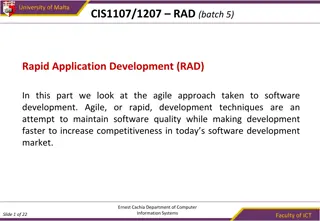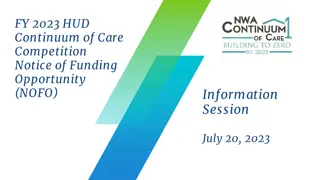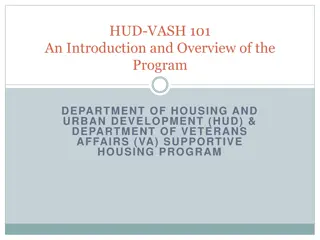PBV vs. PBRA in HUD's RAD Program
Explore the differences between the Project-Based Voucher (PBV) and Project-Based Rental Assistance (PBRA) programs under HUD's Rental Assistance Demonstration (RAD) initiative. Learn about rent caps, administration fees, selection criteria, impacts, and more to make informed decisions. Discover why PBV or PBRA may be the right fit for your housing project.
Download Presentation

Please find below an Image/Link to download the presentation.
The content on the website is provided AS IS for your information and personal use only. It may not be sold, licensed, or shared on other websites without obtaining consent from the author.If you encounter any issues during the download, it is possible that the publisher has removed the file from their server.
You are allowed to download the files provided on this website for personal or commercial use, subject to the condition that they are used lawfully. All files are the property of their respective owners.
The content on the website is provided AS IS for your information and personal use only. It may not be sold, licensed, or shared on other websites without obtaining consent from the author.
E N D
Presentation Transcript
PBV Versus PBRA RAD 2020 Awardee Virtual Training Day One June 16, 2020 Presenter: Jaime Bordenave
Program Basics RAD-PBRA RAD-PBV Administered directly by HUD s Office of Housing No Admin Fee for PHA Project Owner typically manages waiting list Rent Capped at lower of a) current funding; or b) 120% of FMR Exceptions up to 150%, with Rent Comp Study Administered by PHAs Administering Agency receives Admin Fee PBVs are integrated into the PHA s HCV Program Rent Capped at lowest of a) current funding; b) 110% of FMR; c) Rent Reasonableness Similar to HCV Program 1
Who is Winning? RAD Conversions to date (Jan, 2020) 2
Why Choose PBV? Major Reasons for Selecting PBV: Admin Fees More Control Don t like HUD s Multi-Family Program Grows the HCV Program greater efficiencies Possibly added staff retention 3
Why Choose PBRA? Major Reasons for Selecting PBRA: Higher Rent Cap (120%+ versus 110%) If PHA doesn t have a Voucher Program Already Familiar with the PBRA Program May work better with site-based management Program s long track record (1974) & strength of industry familiarity and support Needed for $100 PUM Rent Boost Opportunity Zones 4
What is Impacted by this Selection? Everything! Rent Setting/Funding Staffing Software Systems Regulations Financing Plan Requirements Closing Documents Leases Capping of OCAFs Everything! Inspections HAP Contract Administration Environmental Report Requirements Choice Mobility Options Direct PHA Ownership Accounting & Reporting Lender/Investor Interest 5
Rent Setting & Funding RAD PBRA rents can be higher than PBV, but not vice-versa Opportunity Zone boost requires PBRA program 6
Financing Plan Requirements PBRA Impacts 2530s required, in APPS system Part 50 Environmental Report, with Phase 1 ESA; Part 58 for PBV Affirmative Fair Housing Marketing Plan Good Cause Exemption for Choice Mobility Timing on Choice Mobility (2 years v. 1) Limitations on Choice Mobility Rent Comp Study needed if current funding >120% of FMRs Different regulation on Site & Neighborhood Standards 7
HAP Contract Administration PBV PBRA If PHA has ownership, need an Independent Agency for HQS, Rent Reasonableness Determination, OCAF adjustments PHA cannot contract with itself on HAP need separate ownership entity No Admin Fee in Year 1 PHA could have direct ownership; HUD directly or PBCA administers RAD PBRA HAP is under Old Regulation , no restriction on cash flow 8
Excerpt from Accounting Brief #22 . . . If the PHA that will administer the HAP contract is the same PHA that currently owns the project, HUD will normally require the project to be disposed of to another separate legal entity. Normally, the PHA will establish a wholly-owned affiliate organization to own the project. The affiliate will be a separate legal entity, such as a nonprofit subsidiary, that is controlled by the PHA The PHA will then enter into a HAP contract with the wholly-owned affiliate. 9
Accounting & Reporting PBV PBRA No MORS, REAC Financial Assessment, or REAC Assessments, unless FHA- financed Certifications and Recerts on HUD Form 50058 50058s are reported in PIC Module of HUD s Inventory Management System MORS, REAC Financial Assessment and REAC Assessments are required Certifications and Recerts on HUD Form 50059 TRACS compliant software is required 10
Impacted Elements Rent Setting/Funding Staffing Software Systems Regulations/Manuals Financing Plan Requirements Closing Documents Leases Capping of OCAFs Inspections HAP Contract Administration Environmental Report Requirements Choice Mobility Options Direct PHA Ownership Accounting & Reporting Lender/Investor Interest 11
Key Guides RAD Quick Reference Guide of Projects Converting to PBV, Oct, 2014 https://www.hud.gov/sites/documents/RAD_PBV_CONVERSION.PDF RAD Quick Reference Guide to Multifamily Housing Requirements (PBRA), Feb, 2014 https://www.hud.gov/sites/documents/RAD_PBRAQUICKREF.PDF RAD Guide to Choosing Between PBV and PBRA for Public Housing Conversions See RAD Resource Desk Library (must be logged in) www.radresource.net 12
Key Guides RAD Financing Plan Guides (RAD Resource Desk) RAD Notice (Rev. 4) MTW Guide for RAD (RAD Resource Desk) HOTMA of 2016, PIH Notice 2017-21 HOTMA Implementation Accounting Brief #22: FDS Reporting Requirements when converting under RAD https://www.hud.gov/program_offices/public_indian_housing/reac/products/fa ss/pha_briefs 13
Topics Covered I. General Provisions Congressional Appropriations Income Mixing II. Contracts and Rents Initial Contract Term Contract Renewal Rent Caps Contract Rent Increases Vacancy Payments Rehab Assistance Payments 14
Topics Covered III. Tenants Re-Screening at time of Conversion Right to Return for Initial Tenants Phasing of Rent Increases Resident Participation Choice Mobility IV. Other Program Cap REAC UPCS Inspections Management & Occupancy Reviews REAC Annual Financial Statements (AFS) 15
PBV vs. PBRA | Moderated Panel Discussion A discussion among PHAs about their experience with each voucher platform in the RAD context. Panelists: Anthony Snell, Metropolitan Housing Alliance Christina Husbands, Fresno Housing Authority Joseph Bamberg, Boston Housing Authority Moderator: Jaime Bordenave 16
Next Session Requesting Technical Assistance (TA) Greg Byrne, HUD Office of Recapitalization Topics covered include the HUD resources available to support PHAs throughout the RAD process. 17







